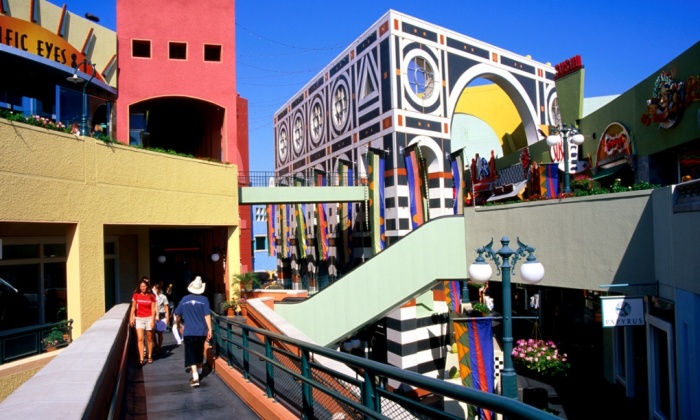
Jon Jerde created ultimate consumer playgrounds. Horton Plaza in downtown San Diego, with its post-modernist colour scheme and split level walkways, has been likened to an Escher drawing. Photograph: Anthony Pidgeon/Getty Images/Lonely Planet Image
I love the mall as much as I love the urban walking experience, museums and movie theaters. Today the stripmall is not just a part of my everyday life in Los Angeles – a place that so well offers the paradox of American consumerism with a health-conscious urban elite – it is also a memory from my own suburban adolescence growing up in Illinois.
Jon Jerde, the LA architect both celebrated and loathed for his role in spreading shopping malls across US suburbia, died this month. Some might scoff at his life’s achievement. I am not one of them.
Born and raised in a rural small town in Illinois, Jerde’s interest in crowds and urban spaces could have been credited to the vast amount of time he spent growing up in desolate places. His breakthrough as an architect came in 1977, when he transformed a retail development in San Diego into the Horton Plaza, a mixture of indoor and outdoor spaces bridged by walkways, shops, and an entirely new consumer experience.
Read my op-ed on The Guardian: http://www.theguardian.com/commentisfree/2015/feb/23/shopping-mall-american-experience-public-square



